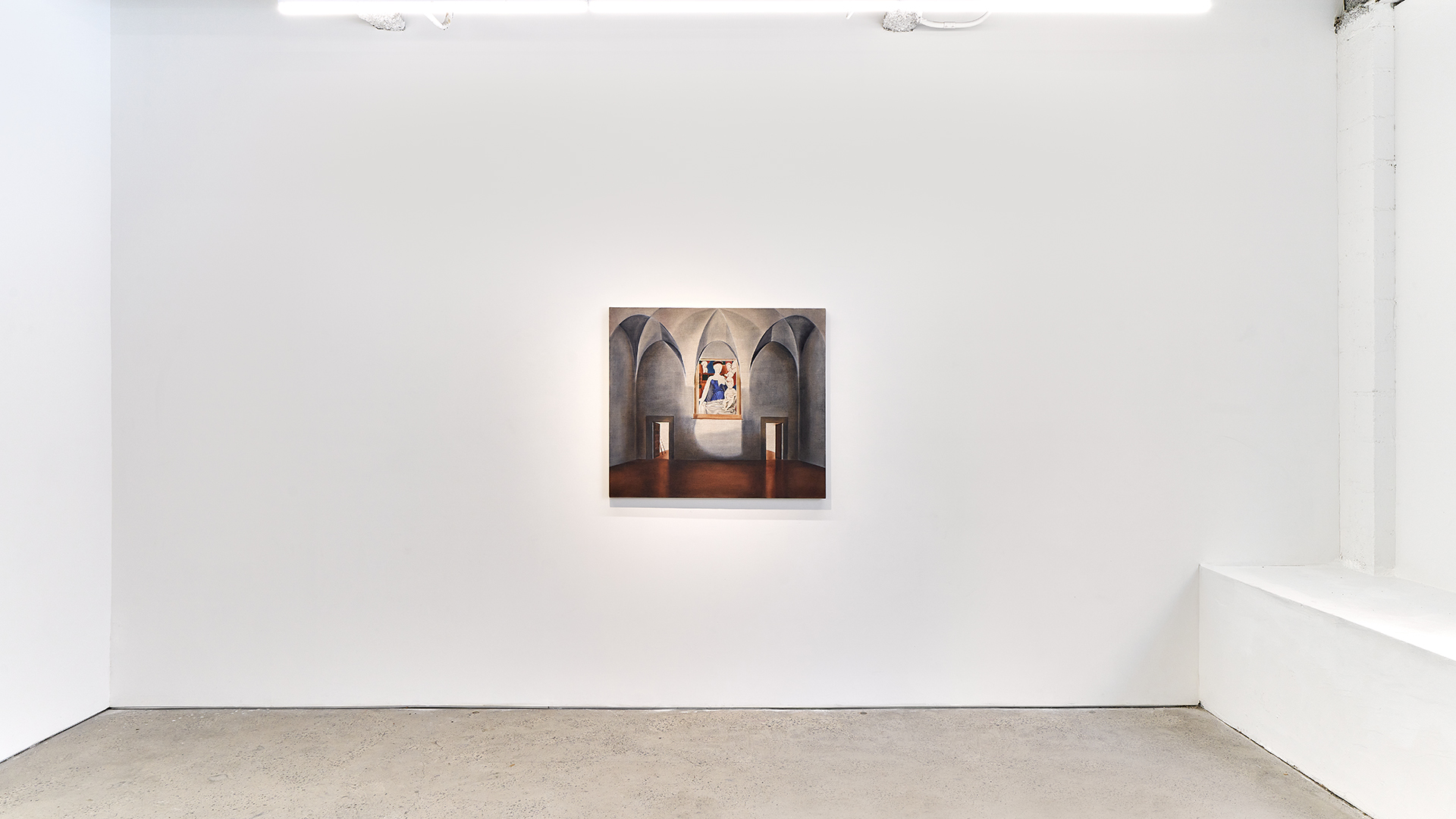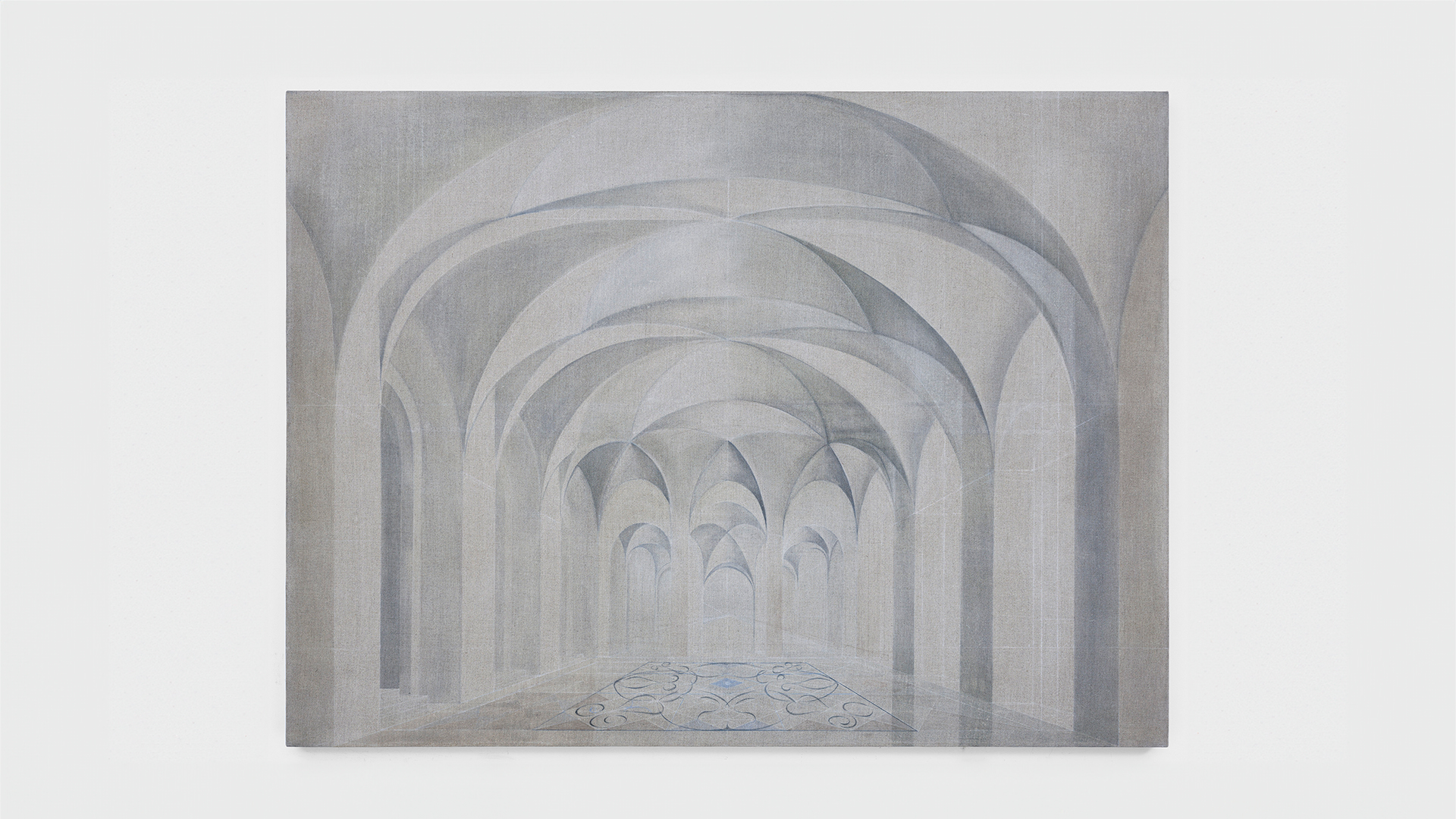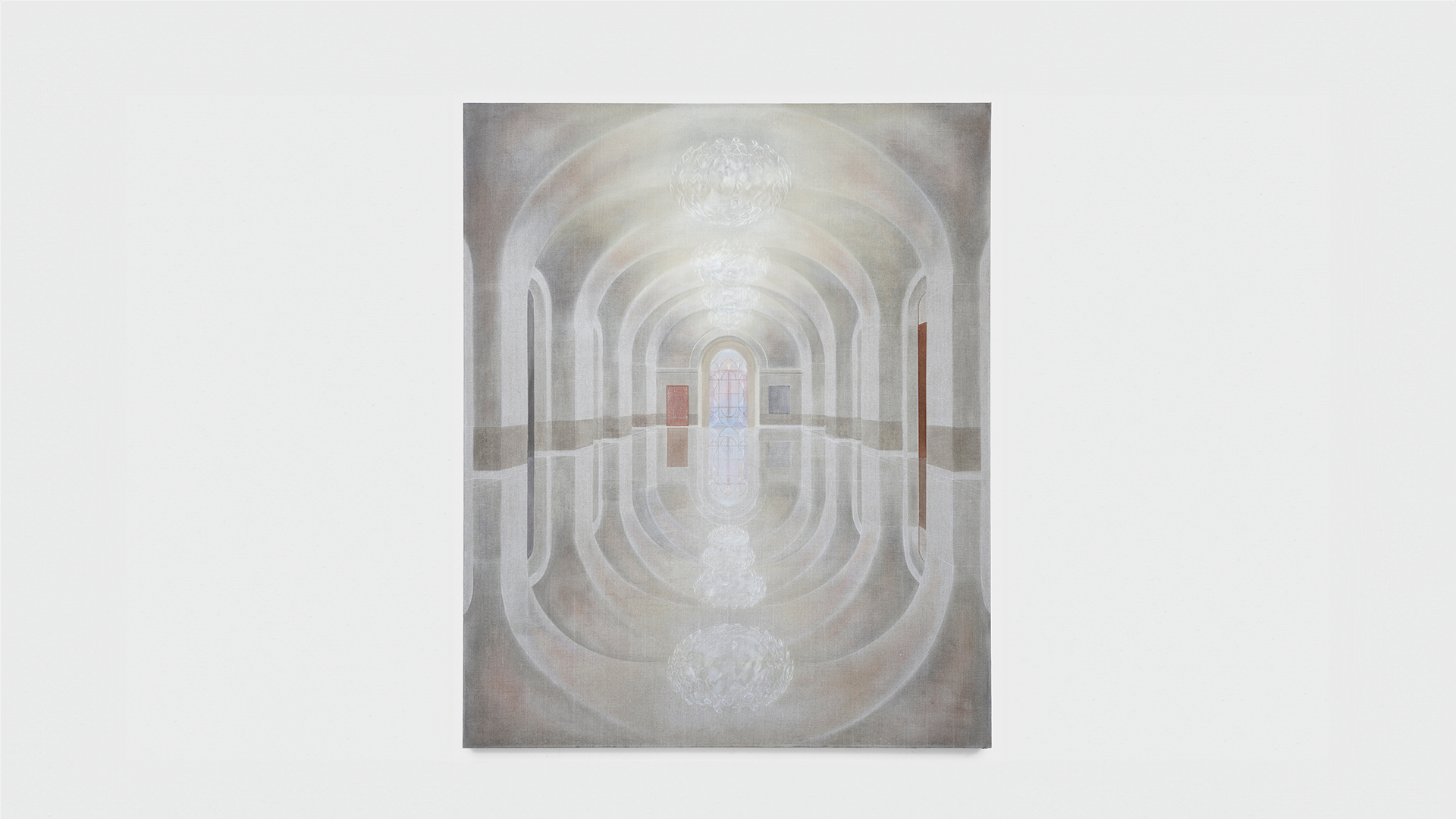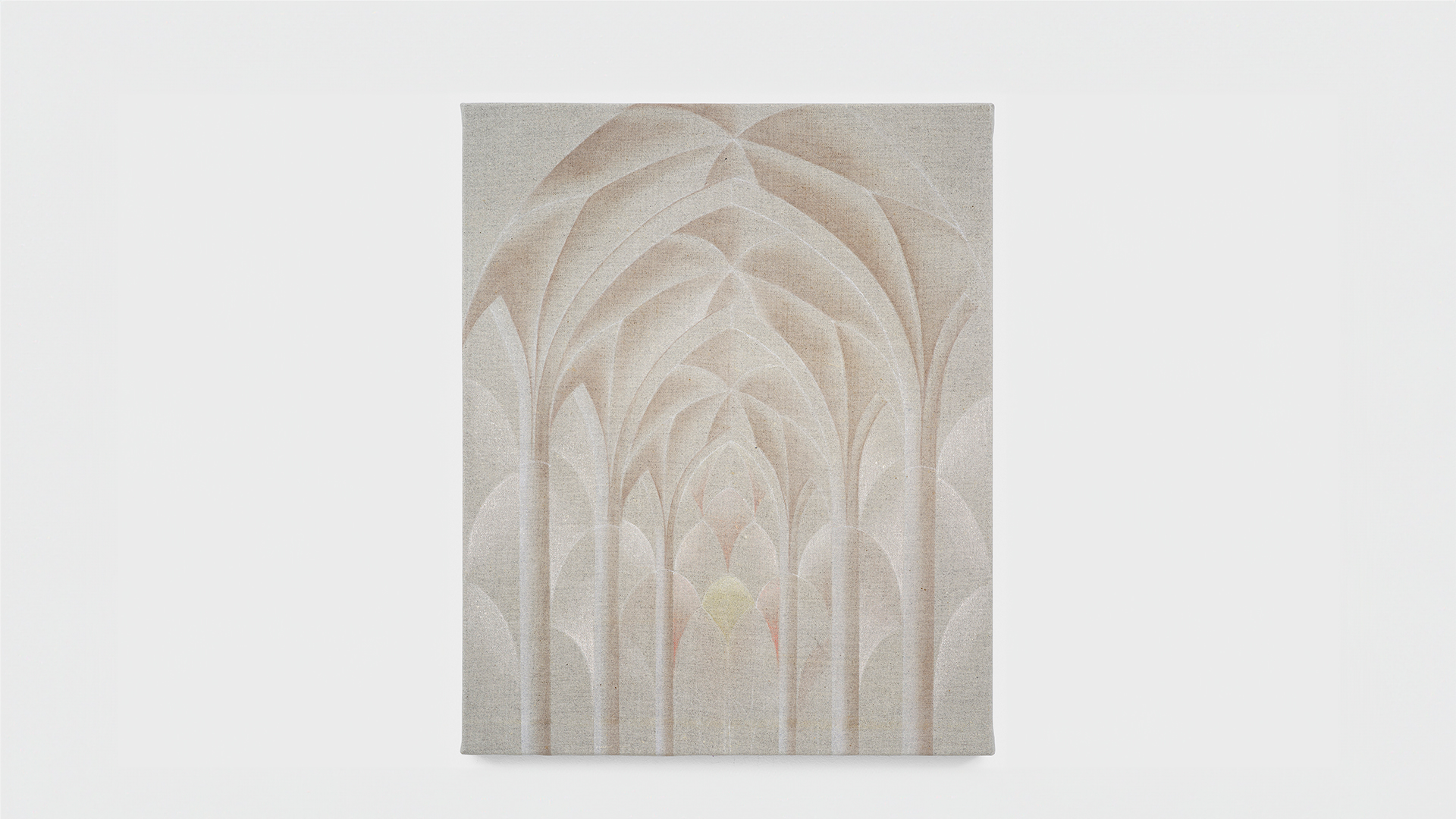Dedicated visitors to the world's museums may recognize certain of the galleries, corridors, and collections projected onto the canvases of Suyi Xu's latest body of work. In The Resurrection I, Xu steals Fouquet's Virgin and Child Surrounded by Angels from the Royal Museum of Fine Arts in Antwerp, and hangs it in a life-modeled rendition of a gallery in the Museo Civico in Sansepolcro. In The Resurrection II, we see the same room, only the painting-within-the-painting has uncannily disappeared. In The Monarch, we return to the hallway of the Royal Museum of Fine Arts, but it is empty, and in Xu's derangement of it, the floors have been cleared, walls torn down, and new corridors erected; light glows through and overtakes everything. The Doppelgänger's title has two meanings, since it is a mirror of The Monarch in which the floors themselves have been transformed into mirrors that reflect and transform the once-grounded corridor into a visually redoubling “O.”
This is the first of what prove to be multiple gestures of ungrounding and doubling, as the paintings move from historical space into the faceted space of dreams. The Queen of Hearts is another double, this time of The Palace, in which the stairs have been removed, a play on one-point perspective that takes the notion of the “vanishing point” to its logical extreme, where the point becomes a literal void that vanishes what surrounds it, even the horizon itself. Foreground merges into background, interior melts into exterior space; the integrity of architectural forms is discarded, and what's left is a pulsating echo of those forms. Without a horizon, space has no center, and our sense of gravity and place become destabilized. The arches could be extending toward us or away from us, or we could be plunging into them. The possibility of descent reappears in The Fall, which overlooks a sort of courtyard, and pays homage to a study in vertical perspective by Renaissance architect Hans Vredeman de Vries. But “freefalls” like The Queen of Hearts have no courtyard at the bottom; there is no obvious ground, and at their center, where the vanishing point should be, is just that: a vanishing.
There lies another meditation on the potency of subtlety, the tremendous strength of a restrained hand: Xu has subdued all colors so as to perceive every whisper of rust, rose, shale, opal and gold all the more intensely. The oil pigment is so delicately applied that we feel a light is passing through the linen, while the paint, in a literal sense, is only acting as a medium; what were once firm boundaries become portals to other worlds.
Suyi Xu's paintings can be read as a critique of power, highlighting the ability of certain spaces to create awe and intimidation, orientation, and even disorientation through the use of the one-point perspective technique. But they can also be read as poetic misprisions of that technique, as prisms with invisible horizons in which space accumulates around a void. “The center of the painting is often an empty space that I don't know what to do with until the very last moment,” Xu says. Thus an empty center can simply be, as Xu suggests, the place on the canvas where the painting ends. But it can also represent the solitary place from which the work begins. Contained here is an allusion to Simone Weil's treatment of the Christian theological concept of kenosis, or self-emptying: “Grace fills empty space, but it can only enter when there is a void to receive it.” Xu's paintings invite us to dwell comfortably in negative space, opening abysses that both rule the viewer's imagination and let us fall freely through the unknown.
Suyi Xu is an artist who currently lives and works in Brooklyn, New York. Xu earned her B.A. in Art History and Visual Arts from Barnard College (New York) and her M.F.A. in the Fine Arts Department of the School of Visual Arts (New York) in 2022. Xu's paintings are meditations on space, interiors, and architecture that morph into meditations on light and color fields. By interjecting historical references and idiosyncratic symbolic elements, she addresses the idealism and authorship of art historical narratives. Xu's work has been exhibited in the U.S., Europe, and Asia, including the solo exhibition All that is Solid Melts into Air (Fou Gallery, New York, 2022), group exhibitions at Fortnight Institute (New York, 2023), Parent Company Gallery (New York, 2023), LATITUDE Gallery (New York, 2023), Gallery Func (Shanghai, 2023), Galerie Hussenot (Paris, 2022), New Collectors Gallery (New York, 2021), and A.I.R. Gallery (New York, 2021). Her works are included in the public collections of Powerlong Museum (Shanghai), Xiao Museum of Contemporary Art (Rizhao, China), and Long Museum (Shanghai)

















-1711336523.jpg)
-1711336525.jpg)









